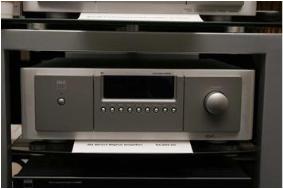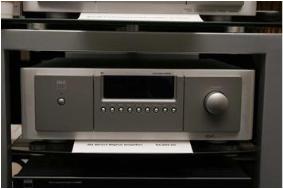MUNICH SHOW: NAD launches 'World's Most Advanced Amplifier'
The NAD M2 Direct Digital Amplifier, expected to launch this summer for around £5000, claims to redefine digital amplification


Greg Stidsen, NAD's director of product development, insists the M2 is "revolutionary", saying it's "Class D amplfiication that has both the measured and subjective performance to raise the bar compared to existing Class A and AB amps".
The 250W-per-channel M2, which fits into NAD's Master Series, is the result of a decade-long NAD research project and three years of 'intense development', including collaboration with UK-based semiconductor specialist, Diodes Zetex, on what's claimed to be unique digital amplification architecture.
Best digital amplifier ever?
NAD's claims continue: "Superior to any previous digital amplifier, the M2 can be thought of as a Digital-to-Analogue Converter (DAC) that directly drivesa loudspeaker, but with the same precision as the very best low-level DACs."
The M2 is said to be the first digtial amplifiier to fully exploit the resolution potential of HD audio and a fully digital signal path; the first amp to use high-speed digital error connection to reduce distortion while maintaining full HD resolution; the first digital amp to fully implement closed-loop processing; and the first digital amp to feature Direct Digital Feedback Amplifier (DDFA) architecture.
Feedback, please
DDFA – co-developed with Diodes Zetex – claims to avoid the limitations of conventional error-correction or 'feedback' approaches used to achieve very-low distortion. How? By generating a feedback signal through comparison with an extremely pure reference, then converting the signal to the digital domain at an 108MHz sample rate before using it for correction.
The latest hi-fi, home cinema and tech news, reviews, buying advice and deals, direct to your inbox.
DDFA simply determines the pulse area error, regardless of its cause, and passes the information to the digital domain for compensation. The result, NAD claims, is "unmeasurably low" levels of jitter.
The new NAD offers a wide range of connecitivity options, including digital – two coaxial inputs; two optical inputs; SPDIF optiical (Mac and PC compatible) in/out – and both balanced and standard analogue inputs.
Other features include switchable Digital Soft Clipping, three power supplies, and an RS-232 serial interface that enables the M2 to be controlled by either a computer or a Crestron-style system.
Enough technology - how does it sound?
With so many features packed into the product – and superlatives packed into the press conference here at Munich – we can't wait to test the M2, which we hope to do for the Temptations section of What Hi-fi? Sound and Vision before the summer is out.
